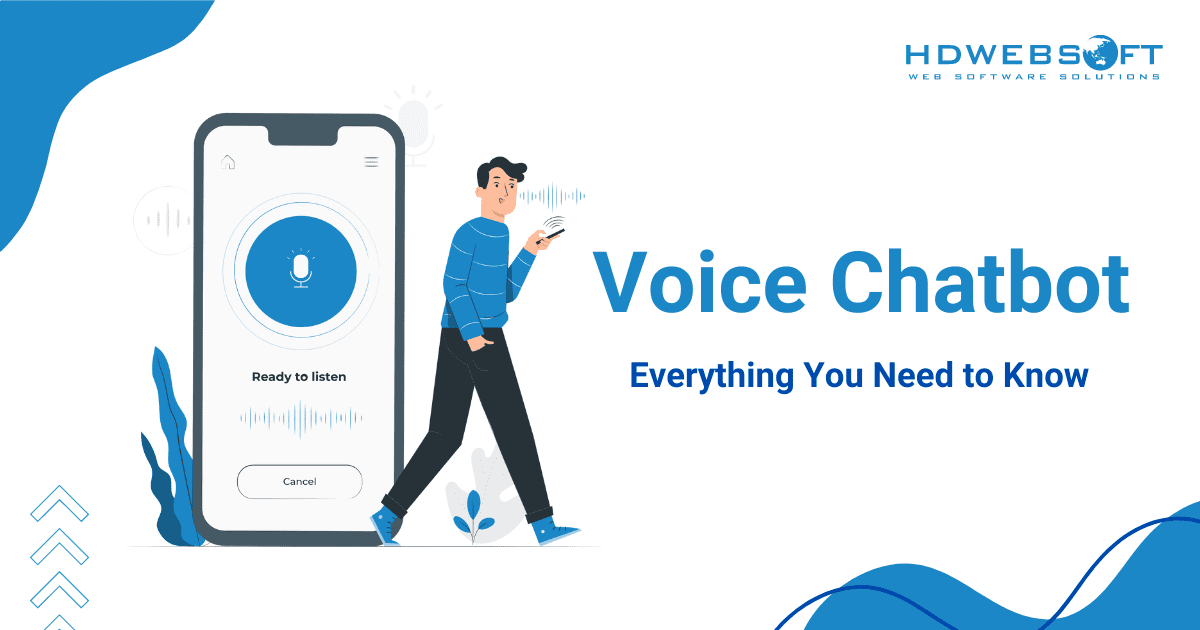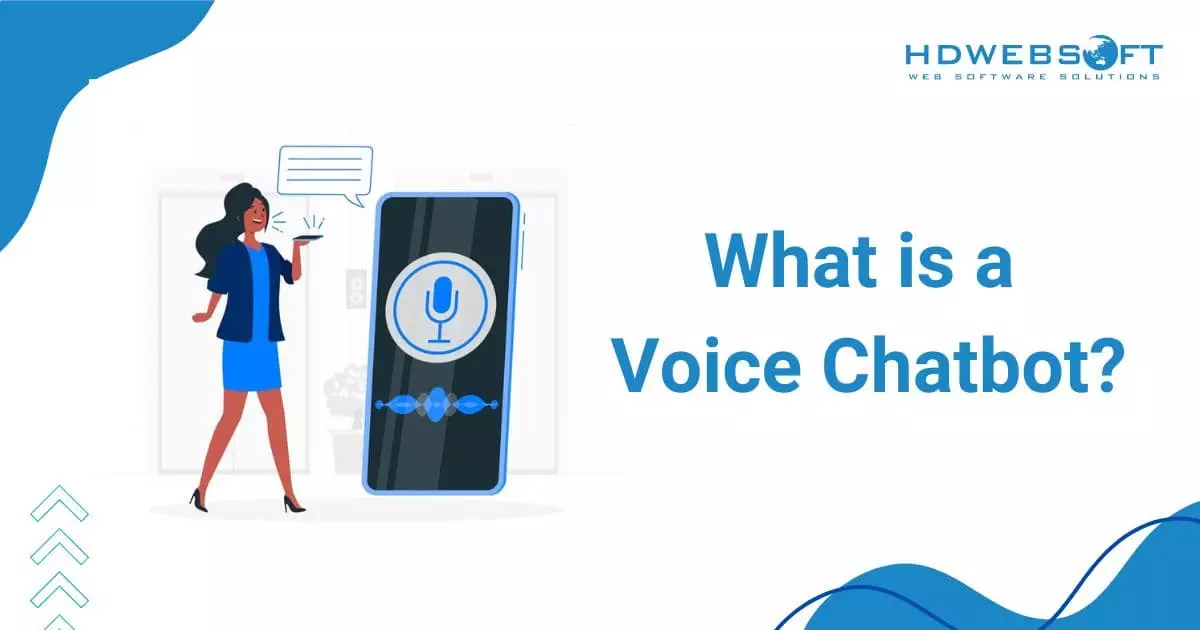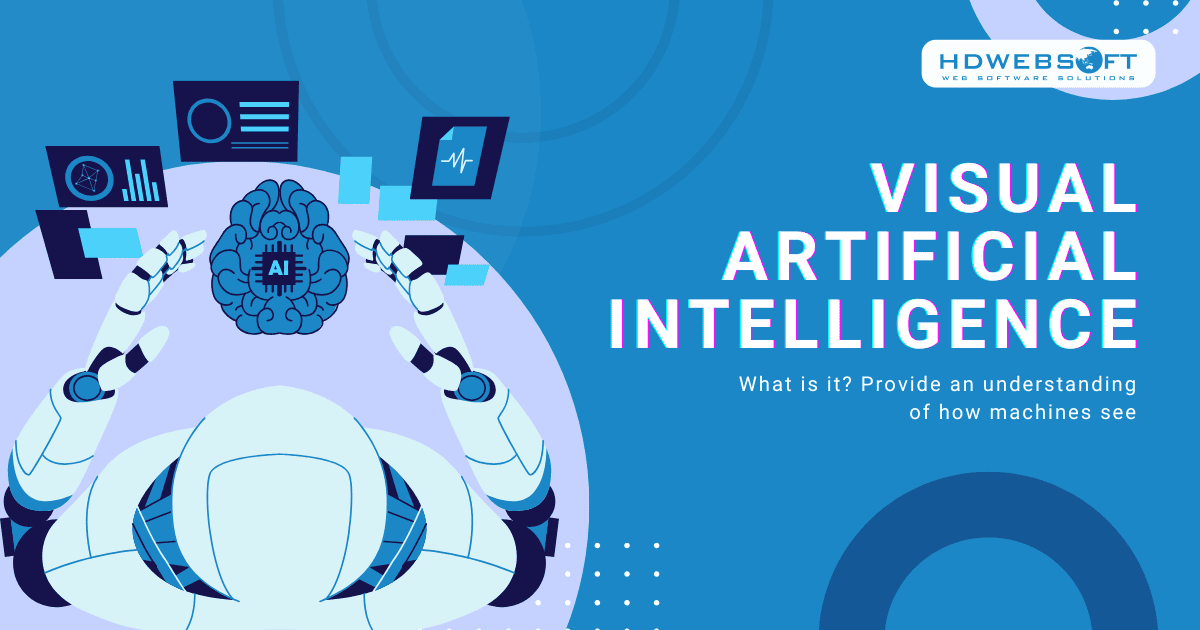
Everything You Need to Know about Voice Chatbot
Voice chatbot is transforming the way businesses interact with customers, offering a seamless and intuitive user experience through voice commands. As technology evolves, voice-activated virtual assistants are becoming an integral part of customer service, marketing, and user engagement strategies.
In this blog, we will explore the concept of voice chatbots, the current market landscape, their working mechanisms, and their benefits to businesses and customers.
What is a voice chatbot?

A voice chatbot is an AI-powered application that uses speech recognition and natural language processing (NLP) to understand and respond to spoken commands. Unlike traditional text-based chatbots, voice chatbots interact with users via voice, providing a more natural and conversational interface.
Typically, these bots can be integrated into various platforms, such as smartphones, smart speakers, websites, and other parts of the Internet of Things (IoT). They allow users to interact hands-free.
Notable examples of voice chatbots include Siri by Apple, Google Assistant by Google, Amazon’s Alexa, and Microsoft’s Cortana. Remarkably, these voice assistants have evolved significantly. They increasingly provide responses and services according to user preferences and situational context, indicating a step toward more sophistication.
Overview of the voice chatbot market

The voice and speech recognition business is expected to reach an astounding valuation of $214 billion by 2025. This growth is driven by the increasing significance of conversational AI, which has resulted in a boom in the adoption of voice chatbot. Additionally, research shows that a significant 71% of consumers prefer using their voice to search online rather than typing.
Today, people are seamlessly integrating voice assistants into their daily lives. These AI-powered tools are used for a variety of tasks, such as setting reminders, shopping, finding recipes, and staying up-to-date on the news. The possibilities for voicebots are seemingly endless. Looking ahead to 2024, we can expect to see voice bots becoming increasingly common in various industries, such as travel, banking, and many others.
How does voicebot work?

Voice chatbot operates by combining several advanced AI technologies to interact with users via spoken language. Here’s a detailed breakdown of how a voicebot works:
Speech Recognition
The first step in a voicebot’s operation is Automatic Speech Recognition (ASR). This technology converts spoken language into text. ASR systems are trained on large datasets of spoken language and can recognize various accents, dialects, and languages. This conversion from voice to text is crucial, as it allows the voicebot to process the user’s input in a format it can analyze.
Natural Language Processing (NLP)
Once the speech is converted into text, the voicebot uses NLP to interpret the meaning behind the words. NLP involves parsing the text, understanding the structure of the sentences, and determining the intent of the user’s input. For example, if a user says, “What’s the weather like today?” the NLP engine identifies that the user is asking for weather information.
NLP encompasses various subfields:
- Tokenization: Breaking down text into individual elements like words or phrases.
- Sentiment Analysis: Understanding the emotional tone behind the user’s words.
- Entity Recognition: Identifying specific items in the text, such as dates, locations, or product names.
Dialogue Management
After determining the user’s intent, the voice chatbot’s Dialogue Management system takes over. This component decides how the bot should respond based on the context of the conversation. The dialogue management system maintains the flow of conversation, manages multi-turn conversations, and ensures that the bot’s responses are relevant and coherent.
For instance, if a user asks for restaurant recommendations, the dialogue manager may ask follow-up questions about the type of cuisine or the user’s preferred location to refine the suggestions.
Natural Language Generation (NLG)
Next comes Natural Language Generation, where the bot formulates a response in a human-like manner. NLG is responsible for converting the bot’s internal data or decisions into natural-sounding language that can be communicated back to the user.
For example, based on the user’s request for weather information, the NLG component might generate a response like, “Today’s weather is sunny with a high of 75°F.”
Text-to-Speech (TTS) Conversion
Finally, the voice chatbot uses Text-to-Speech technology to convert the generated text response into spoken language. TTS systems have become highly sophisticated, capable of producing speech that sounds natural and is easy for users to understand. Consequently, this speech is delivered to the user through the voice bot’s interface, completing the interaction.
Machine Learning and Continuous Improvement
Machine learning plays a critical role in voice bot operation. Over time, voice bots can learn from user interactions, improving their ability to understand speech, interpret intent, and generate appropriate responses. This learning process enables the voicebot to become more accurate and efficient in its interactions, providing a better user experience.
Integration with Backend Systems
Voicebots are often integrated with various backend systems, such as CRM systems, databases, and APIs, to fetch or update information in real time.
For example, when a user asks a voicebot to book a flight, the bot may interact with an airline’s booking system to check availability and complete the booking process.
Benefits of voicebots to businesses and customers?
Many customers prefer to call a business for assistance. Voice chatbot, or automated phone system, eliminates language barriers and can be used on any smart device. Even the simplest phones with a network connection can interact with voice bots. Their user-friendly interface makes them accessible to customers of all ages.
For Business
Voice chatbot offers a multitude of benefits to businesses across various industries. Here are some of the key advantages:
Cost Efficiency
Voicebots can significantly reduce business operational costs by automating customer interactions that would otherwise require human agents. This is particularly beneficial for handling repetitive queries, where voicebots can manage tasks like answering FAQs, processing orders, or providing basic troubleshooting without human intervention.
24/7 Availability
Unlike human agents, voicebots are available around the clock, providing continuous customer service. This ensures that businesses can engage with customers anytime, increasing customer satisfaction and potentially driving more sales, especially for global companies operating in multiple time zones.

Voice chatbot can work 24/7 to provide exceptional customer service.
Scalability
A voice-based chatbot can handle multiple interactions simultaneously, allowing businesses to scale their customer service operations without a proportional increase in staffing costs. This scalability is critical during peak times, such as holidays or major sales events, when the volume of customer inquiries can spike dramatically.
Data Collection and Insights
Voice chatbot can collect valuable data from customer interactions, providing businesses with insights into customer preferences, behaviors, and pain points. This data can be used to refine products, services, and marketing strategies, ultimately improving customer satisfaction and business performance.
Consistency and Accuracy
Voicebots respond consistently to customer inquiries, ensuring that all customers receive the same level of service. This consistency can help maintain brand integrity and reduce the likelihood of errors that might occur with human agents.
Enhanced Customer Engagement
Voice bots can help businesses engage more effectively with their customers by offering a more personalized and interactive experience. For example, they can use customer data to offer tailored recommendations or promotions, increasing the likelihood of conversions and fostering stronger customer relationships.
For Customers
Voice chatbot offers a range of benefits to customers, making them a valuable tool for businesses to provide exceptional service. Here are some of the key benefits for customers:
Convenience
Voicebots offer a hands-free and intuitive way for customers to interact with businesses. Whether they’re driving, cooking, or otherwise occupied, customers can easily make inquiries or complete transactions using voice commands, making the process quicker and more convenient.

Customers can easily make queries everytime with voice chatbot.
Instant Responses
Voice bots provide immediate answers to customer questions, eliminating the need to wait for a human agent. This can be especially beneficial in situations where customers need quick assistance, such as checking account balances, tracking orders, or getting product information.
Personalized Experience
Voice-based chatbot can deliver personalized interactions based on past behavior, preferences, and context. For example, a voicebot might greet a returning customer by name and suggest products they’ve shown interest in before. This personalized approach can make customers feel valued and enhance their overall experience.
Accessibility
Voice chatbot can improve accessibility for customers with disabilities, such as the visually impaired or those with difficulty using traditional interfaces. By interacting through voice, these customers can navigate services and access information more easily.
Efficient Problem Resolution
For many routine issues, voice bots can resolve problems quickly and efficiently without needing to escalate to a human agent. This can reduce frustration for customers who just want a quick solution and ensure that their needs are met promptly.
Enhanced Customer Autonomy
Voicebots empower customers to manage their interactions with businesses on their terms. Whether it’s placing an order, scheduling an appointment, or seeking information, customers have the freedom to do so at their own convenience without being dependent on business hours or human availability.
Conclusion
Voice chatbot revolutionizes customer interaction by offering businesses a more natural, efficient, and scalable solution. As AI technology continues to advance, the adoption of voice chatbots is expected to grow, bringing new opportunities for enhancing customer experience and optimizing business operations.
With the market poised for significant growth, now is the time for businesses to explore the potential of voice chatbots and integrate them into their customer engagement strategies. For businesses that lack the technical expertise or resources to develop and implement voice chatbots in-house, partnering with a reputable software development company can be a strategic move.
HDWEBSOFT is a top software outsourcing company in Vietnam that has proven work experience with AI technologies. We’re confident we can provide the necessary expertise, technology, and support to ensure a successful voice chatbot implementation.









